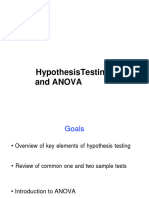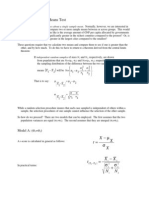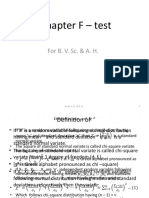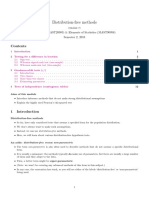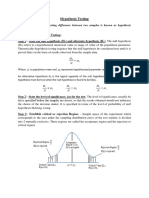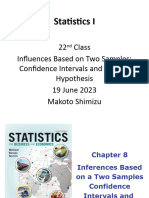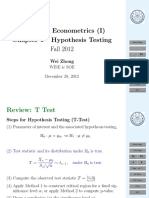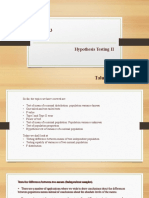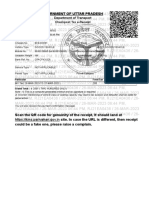0% found this document useful (0 votes)
17 views59 pagesChap 7 - Two Sample Test
The document discusses various statistical tests for comparing two populations, including F-tests for variances and t-tests for means. It outlines the hypotheses for paired and unpaired samples, the formulas for test statistics, and the conditions under which these tests are applied. Additionally, it explains how to interpret the results and make decisions based on critical values and p-values.
Uploaded by
gordon0314Copyright
© © All Rights Reserved
We take content rights seriously. If you suspect this is your content, claim it here.
Available Formats
Download as PDF, TXT or read online on Scribd
0% found this document useful (0 votes)
17 views59 pagesChap 7 - Two Sample Test
The document discusses various statistical tests for comparing two populations, including F-tests for variances and t-tests for means. It outlines the hypotheses for paired and unpaired samples, the formulas for test statistics, and the conditions under which these tests are applied. Additionally, it explains how to interpret the results and make decisions based on critical values and p-values.
Uploaded by
gordon0314Copyright
© © All Rights Reserved
We take content rights seriously. If you suspect this is your content, claim it here.
Available Formats
Download as PDF, TXT or read online on Scribd
/ 59













